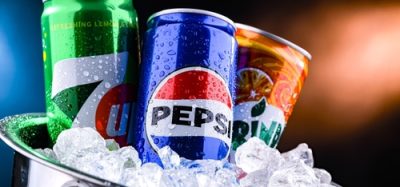Probiotic fruit juices: the new age beverage?
- Like
- Digg
- Del
- Tumblr
- VKontakte
- Buffer
- Love This
- Odnoklassniki
- Meneame
- Blogger
- Amazon
- Yahoo Mail
- Gmail
- AOL
- Newsvine
- HackerNews
- Evernote
- MySpace
- Mail.ru
- Viadeo
- Line
- Comments
- Yummly
- SMS
- Viber
- Telegram
- Subscribe
- Skype
- Facebook Messenger
- Kakao
- LiveJournal
- Yammer
- Edgar
- Fintel
- Mix
- Instapaper
- Copy Link
Posted: 20 November 2019 | Dr Loveleen Kaur Sarao, Dr Maninder Arora | No comments yet
Dr Loveleen Kaur Sarao and Dr Maninder Arora from the Punjab Agricultural University explore how probiotics and prebiotics have become key parts of the modern day health care system, with many incorporating them into fruit juices.


In present times, using foods to promote the state of wellbeing, reducing the risk of diseases and an overall improvement in health has become the new trend in the field of nutrition. The rising cost of healthcare, the steady increase in life expectancy and the improved quality of life makes it even more important. The idea today is prevention, rather than medication. Keeping all this in view, probiotics, prebiotics and the two combined together as symbiotic have become the key pillars of the modern-day health care system.
Probiotics and prebiotics
Generally, the bacteria belonging to the genera Lactobacillus and Bifidobacterium have been used as probiotics. Probiotic bacteria beneficially affect human health by improving the gut microbiota balance and the defences against pathogens. Additional benefits attributed to probiotics are the stimulation of the immune system, blood cholesterol reduction, vitamin synthesis, anti-carcinogenesis and anti-bacterial activities.
Other important criteria to determine the efficacy and the success of a product containing probiotics are the acceptance of the product by the consumer and the survival of probiotics microorganisms during its production. A probiotic strain should withstand the manufacturing process without the loss of viability or negative effect on the sensory properties of the food product. The strain and the claimed properties should maintain stability in the food product during processing and during subsequent storage. For human nutrition, probiotics are defined as “live microbial food supplements or components of bacteria which have been shown to have beneficial effects on human health”.
A large number of viable organisms are required in order to exert a probiotic effect in the food product. It is postulated that an active probiotic food should contain at least 105 cfu/g and the food should be consumed in order to achieve a beneficial effect.
A probiotic strain should withstand the manufacturing process without the loss of viability or negative effect on the sensory properties of the food product…
A prebiotic is defined as a “non-absorbable food component that beneficially stimulates one or more of the gut-beneficial microbe groups and thus has a positive effect on human health”. ‘Synbiotics’ is the word coined for the combined administration of specific probiotics with prebiotics to provide definite health benefits by synergistic action. Probiotic bacteria are used widely in producing foods based on their positive qualities. The common probiotics that have been extensively studied and found in the market are dairy products such as yoghurt and cheese. Recent studies have revealed that other novel probiotics such as fruits juices, cereals and chocolate are better and superior carriers for the delivery of probiotics.
Producing probiotic juices has been considered more in recent years. Less work has been done on synbiotic foods. Hence, there is a need to develop diverse probiotic and synbiotic foods, which can be used as nutrient supplements to promote health. Moreover, many reports also indicate the poor survival of probiotics in functional foods. The stability and viability of the probiotic cultures can be increased by a recent technology known as microencapsulation. Extensive research, however, is required to be conducted on the efficacy of micro-encapsulation to deliver probiotics for their controlled and targeted release in the gastrointestinal tract.
In the last decade, several food products have been fortified, enriched or fermented with probiotics and storage studies having been done for the evaluation of possible carriers of these beneficial microorganisms so that they can be successfully marketed. The most commonly used probiotic strains in these food products are different species of Lactobacillus and Bifidobacterium. The other commonly used strains are Saccharomyces cerevisiae (boulardii), Enterococcus, Bacillus and Escherichia. Owing to the nutritional value of milk and the history and technology associated with it, most probiotic foods are dairy-based. These are not suitable for people who are lactose intolerant, vegetarian or allergic to proteins.
Fruit juices
Fruits such as kinnow, guava, mango and pineapple have been used to prepare probiotic fruit juices. These fruits serve as a rich source of carbohydrates, vitamins, minerals and proteins. Fruit juices already contain beneficial nutrients, so they help in serving an ideal food matrix for carrying the probiotic bacteria. In addition to this, probiotic fruit juices are refreshing and healthy and have a very pleasing taste profile for a wide age group. Despite the benefits, the essential nutrients of fruit juices could also limit probiotic stability and survival in the fruit juice. The survival of probiotics is affected by the pH of the juices especially, the bifidobacterial.
Fruit juices already contain beneficial nutrients, so they help in serving ideal food matrix for carrying the probiotic bacteria
It has been observed that the formulation of the probiotic juices is done by two broad methods: fortification (without fermentation) of fruit juice or fermentation using a single strain of lactic acid bacteria. The probiotic culture is added to fruit juices after the heat treatment, as it is heat sensitive. The usual form is to add the probiotic culture in its activated form, after the successful propagation of the lyophilised culture in the appropriate media. Without a doubt, the probiotics must survive as well as retain their functional features all through the food processing operation, including storage. One of the most important criteria is that at least 106 cfu/ml of the living probiotic strain(s) must be present in the probiotic fruit juice at the time of consumption. Another hurdle to be addressed is the loss of probiotic viability during gastrointestinal transit. The shift of pH and bile are the major stress factors. These stress factors need to be overcome by probiotics to fulfill their biological role.
An understanding of the viability and survival ability of individual probiotic strains during the fermentation and storage processes needs further studies. The characteristics of fermented fruit beverages are highly dependent on the spectrum of actual fermentable sugars, on the probiotic strain(s), and on nitrogen (protein) content. The production of lactic acid by bifidobacteria can be enhanced by supplementation with prebiotics such as fructooligosaccharides, tagatose and xylooligosaccharide. It has also been observed that the addition of prebiotic has led to an improvement in the stability of fermented and probiotic cells. The qualitative as well as the quantitative role of nitrogen sources should be determined to enhance the sensorial taste of fruit juice beverages.
In a nutshell, it can be said that it is possible to develop probiotic fruit juices, allowing the consumption of these beneficial microorganisms by people who either do not have a liking for dairy products or are intolerant or allergic to milk components. In addition to this, the introduction of probiotic fruit juices in the market for common people, increases the number of available probiotic products. Fruit juices essentially serve as a good substrate for the growth and propagation of probiotic bacteria.
About the authors


Dr Loveleen Kaur Sarao
Dr Loveleen Kaur Sarao works as Senior Research Fellow in Punjab Agricultural University in the Department of Microbiology. She has an expertise in Food Microbiology.


Dr Maninder Arora
Dr Maninder Arora works as Senior Food Microbiologist in Punjab Agricultural University in the Department of Processing and Food Engineering. She has an expertise in Food Microbiology and has handled several projects and had conducted several pilot plant studies.







